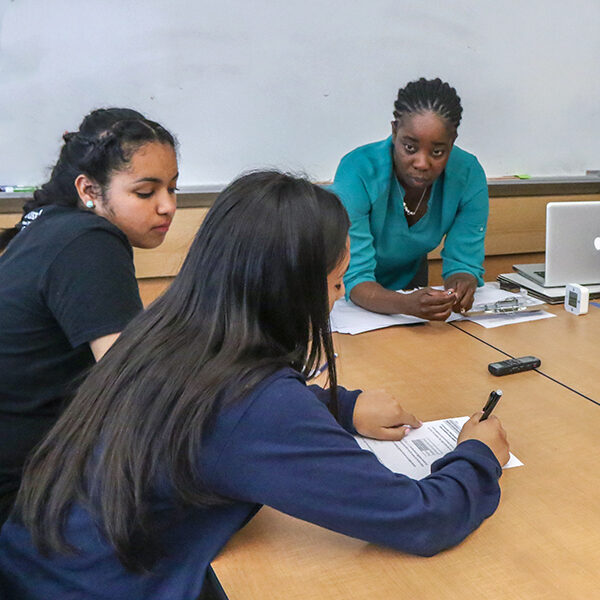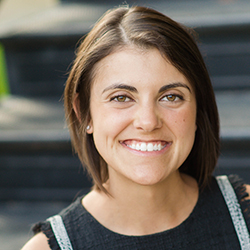
Have you ever felt like your blended- or personalized-learning program should be more innovative than it is? I certainly have.
In my role as blended learning coordinator for the Alliance for Catholic Education (ACE), I help leaders and teachers in Catholic schools implement blended-learning programs. I am always a little self-conscious about describing our schools’ model as Station Rotation, as if our model is not innovative enough or not really disrupting our traditional classrooms. But here is our reality: the Station Rotation model proved to be the best way for most of our teachers to serve the majority of our students right now.
Prior to joining ACE, I immersed myself in research about some of the most innovative blended-learning programs in the nation. As an undergraduate student, I spent three weeks in the elementary studio of Acton Academy learning about the school’s innovative model of mastery progression and admiring the radical independence afforded to students. As an intern for the Christensen Institute, I visited some of the Bay Area’s most inspiring institutions, such as Summit Public Schools and Khan Lab School, and celebrated the flexibility and fluidity of each school’s model.
By the time I began to design and implement blended-learning programs in Catholic elementary schools in my current role, I was convinced that the success of a blended-learning program should be measured by the extent to which it departs from the traditional one-size-fits-all model. Though I conceded that most teachers would gravitate toward the Station Rotation because it builds on a number of traditional practices, I championed the Flex model and constantly reiterated its benefits: more flexible progression based on mastery, more agency for students, and more one-on-one time for teachers and students.
In my first year on the job and our first year implementing blended-learning models in our Notre Dame ACE Academies, we experimented with models that depart more dramatically from the traditional classroom model and uncovered a number of reasons why these models were not right for us at the time.
With one year of implementation under our belts, I am here to tell you that the classrooms that departed most significantly from the traditional classroom model actually experienced the least success according to criterion-referenced assessments, state tests, and classroom data. To my great surprise, the school’s K–2 classroom—which used a standard Station Rotation model—achieved 119% of projected growth in reading and and 140% of projected growth in math. The grades 5–6 classroom, on the other hand–which experimented with a multiage, flexible model–achieved less than 100% of projected growth in both subjects. Of course there were many factors that contributed to the varied success in these two settings, but these results helped us draw one critical conclusion: our classrooms tried to use the Flex model too quickly.
Perhaps some teachers can successfully take their classrooms from traditional one year to highly personalized and flexible the next, but doing so would require extensive and intensive support for both teachers and students—and even that might not be enough to ensure success. My own experience and research indicates that a successful transition to the Flex model will likely take place over a number of years rather than a number of weeks. Over time, students and teachers can become increasingly comfortable with mastery-based progression, student agency and ownership, different online learning platforms, and other components of flexible classrooms.
I still believe that a highly-personalized and less-structured learning environment is powerful for many reasons, but I also believe that the most successful model of blended or personalized learning will be that which is most responsive to the needs of the students and teachers involved. The beauty is that the students’ and teachers’ needs will change over time as they become more confident with new styles of teaching and learning, and the classroom’s blended-learning model will evolve as well. In our schools, that starts with helping teachers implement more structured blended-learning models while intentionally building their capacity to manage more flexible learning environments.
Our emphasis now is on iteration rather than transformation. With the right culture of innovation in place, teachers will not stick to their original Station Rotation model for years to come. Rather, teachers that launch blended learning with a Station Rotation model often adapt the model over time as they gain confidence in and command over this new style of teaching.
One day, you might say that our classrooms are disrupting education rather than innovating within a tradition model. But this transition will take time—and it will not come at the expense of student learning. In our experience, the success of a personalized-learning program is not measured by the extent to which it disrupts traditional educational practices but instead by the positive impact it has on teachers and students.
This post first appeared on christenseninstitute.org.

